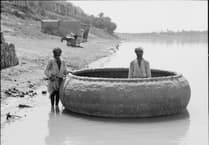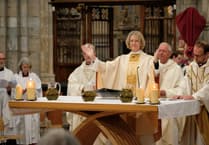IT was mixed news for Dartmoor’s hill ponies this week. While ground-breaking research has proven that Dartmoor pony genetics are unique to the region, it has also been alleged by the Dartmoor Hill Pony Association that their very existence is in jeopardy from new policies set to be introduced through Natural England, the representative institution for Defra.
For any pony lovers, researchers and campaigners, a new peer-reviewed study on Dartmoor ponies is certainly cause for celebration.
The research, orchestrated by a team of international researchers and then published and peer-reviewed in a world-leading journal called Nature, used the Dartmoor hill pony’s genome to prove that Dartmoor Hill Ponies are archetypally British.
During the Victorian era, breeders irreparably diluted the genetic diversity of most equine species by breeding in their favoured breeds of Arabic pony. Only a handful of breeds, many found in Iceland and western Britain, remained substantially free of Arabic blood.

Charlotte Faulkner, Chair of the Dartmoor Hill Pony Association and the Friends of the Dartmoor Hill Pony said: ‘Like the Dodo, we won't get them back once they are gone, they cannot just be replaced because the Dartmoor hill ponies have inherent knowledge complemented by their rare genetic makeup, which enables them to survive on Dartmoor and makes them a perfect example for recognition of the statement ‘the right animal for the right place.’ The archaeological evidence shows ponies have been that animal alongside cattle and sheep for at least 4000 years creating Dartmoor as we know and love it.
‘New scientific evidence which could show the ancestors of these ponies roamed with Dinosaurs is currently being looked at, using a pony bone found in Kents Cavern, just on the edge of Dartmoor, which is about 50,000 years old. If that pony was roaming Dartmoor all that time ago, it could be related to the Dartmoor hill pony seen on Dartmoor today. Ponies have been living on and around Dartmoor for a very long time.’
However, while the new research has set the pony apart from its counterparts, its advocates say that their futures are in jeopardy after Natural England began its review of the ecological state of Dartmoor, and farming policy moving forward.
The issue is coming to a head as the 10-year agri-agreements between Defra and farmers, known as Higher Level Stewardship (HLS) agreements, are coming to an end. Last week, Natural England released a statement, saying that despite ‘huge investment’ in agri-environment schemes, wildlife had declined on the moor. It also stated that no key moorland habitat was considered in a favourable condition.
Resultantly, the Friends of the Dartmoor Hill Pony state that in email correspondence with commoners, the ‘numbers of sheep, cattle and Dartmoor ponies will be cut by at least a further 50%.' The organisation also says that one common ‘has received the stocking rates required to enter a ‘rollover’ which requires a cut of 90%.’
The Friends of the Dartmoor Hill Pony continued: ‘Dartmoor Commons are the only place where the native semi-wild Dartmoor hill pony population is found. For the last 10 years (but not previously) ponies have been included in the HLS stocking calendars.
‘There are currently 1000 breeding native semi-wild Dartmoor hill ponies. The best case scenario under this latest edict would leave 500 Dartmoor Hill Ponies in the entire Population but, in fact, it will be considerably lower. Not only because many commons will be asked to cut by up to 90%, but also because they can be ‘swapped out’ for cattle.
‘We are already hearing commoners, who are desperate to have as many commercial livestock as possible within the overall limit say ‘If Fred gets rid of one pony allowed to graze for 12 months in a year, we could replace it with two cattle allowed to graze for six months.’ So, in fact, the number of ponies remaining will be significantly lower. And it is a dreadful social experiment, pitching one commoner against another with farm business survival at stake.’
Charlotte Faulkner continued: ‘So this genetically important equine, which is so important to the ecology of Dartmoor where it has roamed for at least four millennia, surviving war, plague and climate change – but can it survive the actions of Natural England?

‘Dartmoor now knows it is responsible for an internationally important equine. In response, members of the Dartmoor Hill Pony Association and the charity Friends of the Dartmoor Hill Pony are working together to evidence the value of these ponies to secure their future.’
Dave Slater, South West Regional Director for Natural England, responded: ‘It is not factually correct to suggest that Natural England has imposed any decisions on commoners and landowners forcing them to cull ponies. As well as being a unique part of the landscape, Dartmoor’s ponies have an important conservation role as part of the balance of grazing animals on the commons.
‘We want both the ponies and the natural habitats they rely on to thrive, but none of Dartmoor’s moorland SSSIs are in a favourable condition, with rare moorland birds all but disappearing from the area and precious peatland habitats damaged. The right type of shepherded grazing with the right balance of ponies, cattle and sheep, at the right time of year is fundamental to restoring the health of these moors.

‘That’s why with many of the voluntary agri-environment agreements, that pay commoners to deliver for nature due to expire this year, we’re supporting the commoners and landowners to help them make any changes to timings and patterns of grazing that might be necessary over the coming five years.
‘That will ensure commoners can deliver on the environmental outcomes that they sign up for while safeguarding the important flow of public finance that is critical to the long-term future of this iconic landscape and its internationally important wildlife so that everybody can enjoy it for years to come.’




